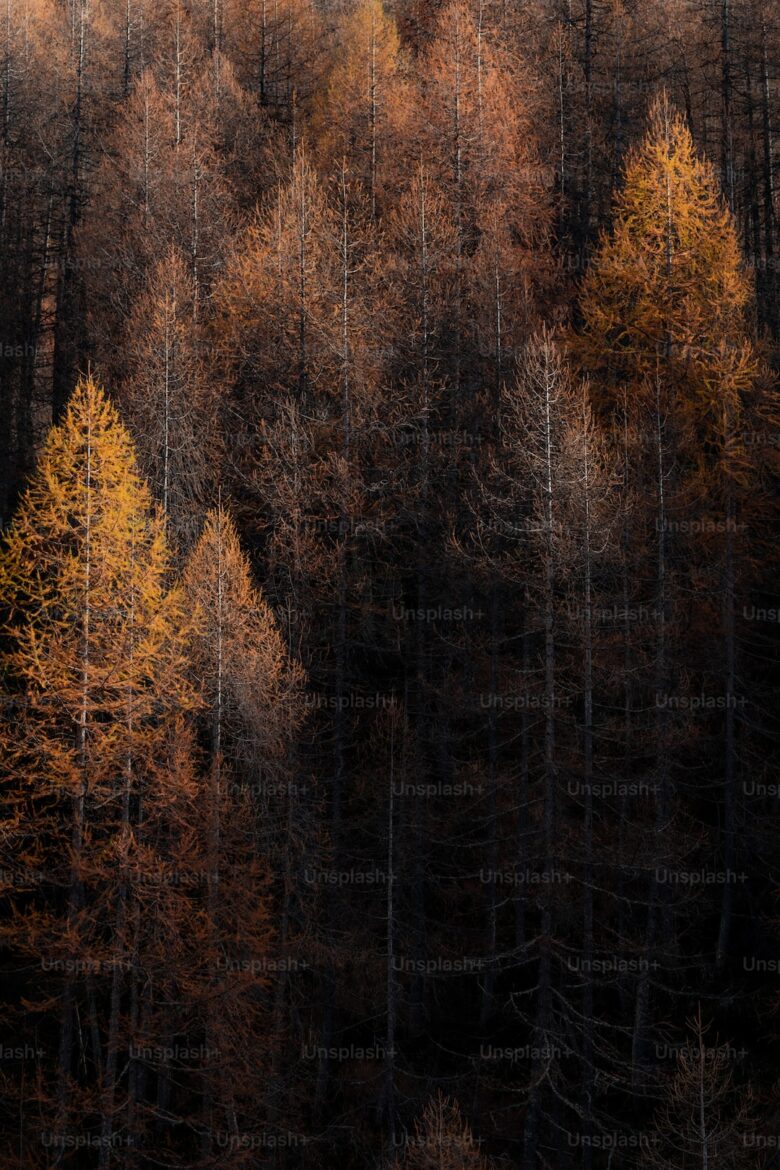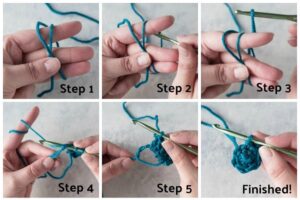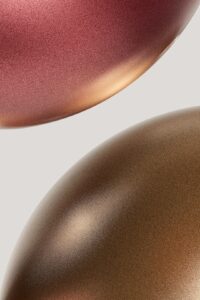Crochet – an ancient art of making fabric with looped yarn and a small hook – contains a world of finesse and creativity. Let us explore the secrets of fine crochet – the skills, the artistic possibilities.
Each stitch reveals an imaginative realm of technique. Master the basics – single, double, and treble crochet – and create intricate patterns. Harness color theory to evoke emotions and tell stories. Experiment with fibers, textures, and stitch combinations to express yourself.
Witness the beauty of crochet firsthand – doilies, blankets, and heirlooms. Each creation is a glimpse into the artist’s soul. So, let us venture into this world of technique and imagination. With hook and thread, make dreams come alive. Let crochet transport you to a realm of boundless creativity where beauty can be made with your own hands.
Understanding the Basics of Crochet
Crochet Basics Unveiled: A Guide to Skill Development
Crochet Basics Unveiled provides an in-depth exploration of the fundamental principles and techniques necessary to fully comprehend the art of crochet. Whether you are an aspiring beginner or a seasoned crocheter, this article aims to demystify the intricacies and build a solid foundation in crochet.
Diving right into the world of crochet, the first step is to understand the core stitches and their variations. From the versatile chain stitch to the intricate double treble stitch, mastering these stitches paves the way for creating intricate and beautiful crochet designs.
Moving beyond stitches, it is essential to comprehend the importance of tension and how it can dramatically impact the outcome of your crocheted piece. Achieving the right tension ensures that your stitches are consistent and even throughout your work, resulting in a polished and professional-looking project.
Additionally, this article delves into the significance of gauge, which refers to the number of stitches and rows per inch. Understanding gauge allows you to accurately reproduce the intended size and dimensions of a project. It plays a crucial role in creating fitted garments, ensuring they fit perfectly and appear as envisioned.
Furthermore, the article explores the importance of choosing suitable crochet hooks and yarns. Different crochet hooks and yarn weights yield distinctive results, and understanding their interplay is essential for achieving the desired outcome. From lightweight yarns for delicate lacework to bulky yarns for cozy blankets, this article elucidates the multitude of options available and their respective applications.
By combining these fundamental techniques and principles, crocheters can unlock boundless creative possibilities. Each stitch, tension, and yarn choice contributes to the overall design and aesthetic of the finished crocheted piece. Understanding and honing these skills not only enhances your ability to recreate existing patterns but also empowers you to embark on your own creative explorations in the world of crochet.
A fascinating fact about crochet is that its origins can be traced back to the 16th century. The earliest known published book on crochet, titled “Das Schiffchenarbeit,” was written by an unknown author and published in 1800. This historical source showcases the longstanding tradition of crochet and its enduring popularity throughout the centuries.
What is crochet? It’s like knitting, but with more opportunities to accidentally stab yourself and unravel your sanity.
What is crochet?
Crochet is a craft that uses hooks and yarn to make patterns and designs. It started in France in the early 19th century and has become popular around the world. By changing the hook size and yarn thickness, you can create different textures and densities.
Crochet comes with many health benefits. It relaxes you, reduces stress, and improves cognitive function. It’s an excellent way to unwind after a long day.
Historians don’t know when crochet began, but evidence suggests it was in 16th century Europe. Nuns used it to decorate clothing and religious objects with lacework. Crochet spread among women of all classes. Different styles and techniques developed around the world, from Irish lace to filet crochet.
Crochet is still part of many cultures’ traditions and continues to motivate people to pick up their hooks.
Materials and tools needed for crochet
Crochet needs a few basics to get going with this creative art form. Here are the must-haves:
- Hooks: Of different sizes, labeled with letters or numbers, to make different stitches and patterns.
- Yarn: Pick one that fits your project in a color and weight. Weight decides the size of your stitches.
- Scissors: Essential for cutting yarn and finishing your crochet work.
- Stitch Markers: Small clips or loops to mark stitches or sections in your project.
More items can help specific projects. For instance, a tapestry needle to weave in loose ends and an ergonomic handle for comfort.
When choosing materials, consider the texture and durability of the yarn, and the right-sized hooks. Thicker yarn goes with larger hooks, and delicate projects need finer ones.
Here are a few tips to enhance your crocheting experience:
- Get high-quality materials: This ensures better results and makes it more fun.
- Try out different textures: It can add interesting features to your projects.
- Join a group or class: Learn from and share ideas with others to improve your skills.
- Practice regularly: Like any craft, practice is key to mastering crochet. It will help refine your technique and let you take on complex projects.
By having the right materials, testing out textures, learning from others, and practicing consistently, you’ll be well on your way to becoming a pro. So, grab your tools and let your creativity unravel!
Basic crochet stitches
The classic crochet stitches: single, double, half double, and treble. Plus, variations and combinations to make complex textures and patterns! Did you know that changing the size of the hook will alter the feel and look of the project? A smaller hook will make tighter stitches, while a bigger hook will give a looser, drape-filled fabric. Also, get to know tension – how tightly or loosely you hold the yarn while crocheting. Tension ensures all the stitches are uniform and the finished product is polished.
The story of Lily highlights the power of basic crochet stitches. She discovered her love for crocheting with a simple scarf. She moved on to create afghans, hats, and other pieces. Crocheting became her passion, and she used it to express her creativity and bring joy to others.
Skill-Building: Mastering Crochet Techniques
Crochet: Unlocking the Secrets to Enhancing Your Skills
Enhance and refine your crochet techniques through skill-building exercises. Follow this 4-step guide to mastering crochet techniques:
- Select Appropriate Materials: Begin by choosing the right crochet hook and yarn for your project. Consider the weight, fiber content, and recommended hook size in order to achieve the desired tension and stitch definition.
- Learn Basic Stitches: Familiarize yourself with foundational crochet stitches such as chain, slip stitch, single crochet, double crochet, and treble crochet. Practice these stitches until you can execute them consistently and accurately.
- Explore Advanced Techniques: Expand your repertoire by mastering more intricate techniques. Experiment with different stitch patterns, colorwork, and shaping methods. Challenge yourself with complex stitches like shell stitch or popcorn stitch, and practice incorporating motifs or filet crochet into your projects.
- Refine Your Finishing Skills: Pay attention to the details that bring your crochet work to its full potential. Practice creating even tension throughout your stitches, weaving in ends neatly, blocking and shaping finished pieces, and adding decorative borders or edgings.
In addition, consider these unique details for further skill development:
- Utilize stitch markers to help keep track of stitch counts or pattern repeats.
- Explore online resources, books, or workshops that provide step-by-step instructions and tutorials on specific crochet techniques.
- Join a crochet community or attend crochet meet-ups to connect with fellow enthusiasts and learn new techniques from experienced crafters.
- Set achievable goals for yourself, such as completing a challenging project or learning a specific stitch, to continuously improve your skills.
By following this skill-building guide, you’ll gain confidence in your crochet abilities while expanding your creative horizons. Let your passion for crochet guide you on a journey of continuous learning and growth.
Get ready to tie yourself in knots with excitement as we unravel the twisted world of crochet stitches and patterns, where even a tangled mess can still be a work of art!
Learning different crochet stitches and patterns
Unlock the secrets of crocheting! Begin with basic stitches such as chain, single crochet, double, and treble crochet. Then, combine them to make intricate designs. Vary effects with different crochet hooks. Also, try reading patterns for step-by-step instructions. Experiment with Tunisian, filet, tapestry, and amigurumi crochet. Master advanced variations like lacework and cable designs. Add colorwork, beads, or sequins for a unique touch. Stay up-to-date with online communities and forums.
The power of crocheting is real – just ask Emily! She started with simple scarves, then moved onto more intricate patterns. Crocheting was therapeutic for her and she became a master at lace shawls. Through practice, Emily was able to expand her skills and bring joy to others.
Practicing tension and gauge control
Use the recommended hook and yarn size mentioned in the pattern. This is key to get the right gauge. Different hook or yarn can give different results.
Practice tension control on a small swatch. Pay attention to how you hold the yarn. Adjust until you get consistent tension.
To get gauge control, measure the stitches and rows with a ruler. Compare to the pattern gauge. If it doesn’t match, use a different hook size.
Practicing tension and gauge control helps create projects that look like the pattern. You’ll be happy with the fit.
Different fibers affect tension and gauge control. Natural fibers stretch more, while synthetic fibers don’t have much give. Learn the differences for better crochet skills.
An old woman I knew used to count her stitches out loud to keep perfect tension. She created amazing pieces. Her dedication inspires me to pay attention to detail.
Tension and gauge control take time to master. But with practice and dedication, it becomes second nature. Work on it and watch your skills blossom. You’ll create beautiful pieces that show your talent!
Exploring advanced crochet techniques
Unlock the mysteries of intricate stitches such as the Catherine wheel and bullion stitch. These methods add a unique depth and texture to your works, making them truly extraordinary!
Learn how to blend multiple colors for tapestry and intarsia crochet. Use multiple shades to craft vibrant projects that reflect your artistic vision.
Master openwork patterns to give your creations an elegant and timeless appeal.
Advanced crochet takes patience, practice and precision. Pay close attention to detail when working complex stitches or lacework patterns. With these skills, you can turn basic yarn into stunning pieces of art!
Take a moment to recognize the historical importance of exploring advanced crochet techniques. It has been passed down through the generations, connecting people and inspiring creativity. Over time, both traditional and modern methods have emerged. From its simple beginnings for practical use, to its current respect as an art form, the exploration of advanced crochet techniques is a beautiful testament to human craftsmanship.
Grow and express yourself through this versatile art form. Embrace the challenge of unraveling the intricacies of crochet mastery, and revel in the accomplishment of every stitch and pattern conquered.
Unleashing Creativity in Crochet
Unleashing Creative Potential in Crochet
Crocheting is not just a craft, it’s an opportunity to unleash your creative potential and bring unique and beautiful designs to life. By combining skill-building and creativity, crochet enthusiasts can create stunning pieces that showcase their individuality. Here’s a closer look at how you can unlock your creativity in crochet.
Unleashing Creativity in Crochet
| Explore different stitch patterns | Experimenting with various stitch patterns allows you to create unique textures and designs. By incorporating different stitches like the popcorn stitch or the cable stitch, you can add depth and intrigue to your crochet projects. |
| Play with color combinations | Choosing the right color combination can have a transformative effect on your crochet projects. By experimenting with bold or subtle color choices, you can create visually stunning pieces that truly reflect your personal style. |
| Add embellishments | Embellishments like beads, buttons, or charms can elevate your crochet projects to a whole new level. By strategically incorporating these elements, you can add eye-catching details and make your creations truly stand out. |
| Think outside the box | Don’t be afraid to break the established norms and experiment with unconventional crochet techniques. Innovate by combining different materials or incorporating unexpected elements into your projects, pushing the boundaries of this traditional craft. |
Exploring New Horizons
In addition to the techniques mentioned above, there are countless other ways to unleash your creativity in crochet. You can try incorporating embroidery, appliqué, or even mixed media into your projects. The key is to constantly seek inspiration from diverse sources like nature, fashion, art, and your own imagination to keep your creativity flowing.
Embrace the Journey
The suggestions mentioned earlier work because they encourage a sense of exploration and experimentation in crochet. By stepping out of your comfort zone, you open yourself up to new ideas and possibilities. Embracing the journey allows you to evolve as a crochet artist and discover your unique creative voice.
So, let your imagination run wild, and with each stitch, you’ll uncover the secrets of fine crochet while expressing your creativity for the world to see. Happy crocheting!
Choose crochet colors wisely, unless you want your grandma’s afghan to be mistaken for a ’70s disco outfit.
Choosing colors for crochet projects
Unleash your creativity! Daring to diverge from the norm and experimenting with unconventional color combinations can bring a unique flavor to your crochet projects.
Opt for colors that work together for a harmonious look, or go for contrast to add depth and dimension.
Consider the mood you want to evoke – cool tones for a calming effect, vibrant hues to spark joy.
And a pro tip – don’t forget to swatch! Small samples can give you insight into how colors interact before you commit to larger projects.
So explore the world of hues and let your crochet pieces bloom with mesmerizing color palettes!
Incorporating different crochet techniques into projects
Crochet fans can take their projects to the next level! Here are some tips:
- Texture: Spice things up with stitch patterns like popcorn stitch, bobble stitch, or cable stitch.
- Color: Use different yarns, or try gradient or ombre effects, for a vibrant and attractive look.
- Combining Techniques: Combine lacework, amigurumi, and more to create unique pieces.
- Embroidery and Appliqué: Personalize your crochet items with embroidery or appliqué pieces.
Explore less common techniques like Tunisian crochet or freeform crochet. These offer endless possibilities for unconventional shapes and textures.
Did you know? Crocheters have been pushing boundaries with new stitches and designs for centuries. This has opened up opportunities for contemporary crocheters to get creative and breathe new life into this timeless art form.
Experimenting with crochet design and pattern modifications
Crochet design has endless possibilities! To show this, here’s a table with modifications you can make to a simple scarf pattern. You can adjust the stitch pattern, yarn weight, color play, and embellishments to create fashionable, one-of-a-kind scarves.
| Modification | Description |
|---|---|
| Stitch Pattern | Shells, cables, lace motifs – add texture and interest. |
| Yarn Weight | Lighter yarn for delicate airy scarves, bulky yarn for cozy winter accessories. |
| Color Play | Combine multiple hues in stripes, or use gradient yarns for an ombre effect. |
| Embellishments | Add tassels, pom-poms, buttons for a playful touch, or beads for an elegant look. |
Crocheters have even experimented with unconventional materials like wire and fabric strips. Jane is a great example. She transformed traditional granny squares into hexagons and combined them in an unexpected way. The result? A stunning geometric blanket! Jane’s creativity and out-of-the-box thinking led her on a journey of discovery.
Tips and Tricks for Fine Crochet
Tips and Tricks for Mastering Fine Crochet
Fine crochet requires skill and creativity. Here are some valuable tips and tricks to enhance your fine crochet abilities:
- Choose the right yarn: Selecting a fine and delicate yarn, such as lace-weight or thread, is crucial for achieving intricate and refined crochet work.
- Use appropriate hooks: The size and material of your crochet hooks play a significant role in achieving fine stitches. Opt for smaller steel or aluminum hooks for greater precision.
- Maintain consistent tension: Maintaining a consistent tension is vital for achieving even and neat stitches in fine crochet. Practice proper hand positioning and experiment with different grip techniques.
- Master intricate stitches: Fine crochet often involves working with complex stitches, such as picots, clusters, and lace patterns. Invest time in learning and perfecting these techniques to enhance the beauty and detail of your projects.
- Block your finished pieces: Blocking is essential for fine crochet to give your finished pieces a polished and refined look. It helps to even out stitches and shape the garment or accessory as desired.
- Pay attention to finishing touches: Adding delicate embellishments, edgings, and decorative elements can elevate your fine crochet projects. Pay attention to the final details to create stunning and exquisite pieces.
To further enhance your fine crochet skills, immerse yourself in the intricacies of different stitch combinations and experiment with varied color palettes.
Interestingly, the history of fine crochet dates back centuries. It originated in Europe in the 16th century as a form of needlework used to create intricate lace trims and embellishments for garments and household items. Over time, it has evolved into a cherished craft, allowing artisans to create delicate, heirloom-quality pieces that showcase their skill and creativity.
Unleash your crochet skills and avoid a needle in the haystack mishap by finding the perfect hook size – no poking yourself in the process!
Using the right crochet hook size
Choosing the perfect crochet hook size is vital for a project’s tension and gauge. Smaller hooks create tighter stitches, great for more structurally secure items. On the contrary, larger hooks make looser stitches for a more airy feel.
When picking yarns and hooks, it’s best to check the manufacturer’s instructions or do a tension swatch test. Experimenting with different hooks helps crocheters get the texture and drape they want. However, everyone has a unique tension, so personal preference is key.
An interesting piece of history? Ancient artisans used thin bone hooks to make beautiful lacework. They knew the importance of the right tool to work with thread easily. Even today, we honour their detail-oriented ways, by selecting the right crochet hook size for excellent results.
Selecting the appropriate yarn weight
For intricate designs, opt for a lace or fingering weight yarn. For larger projects, like blankets or scarves, a worsted or bulky weight yarn may be best. Check the pattern for recommendations – it’ll guarantee the desired outcome!
Different yarn weights offer varying degrees of drape. Thicker yarns create more structure, while thinner ones provide a lighter drape. Consider the feel and hang you want for your finished project before selecting the right yarn weight.
Experimenting is key! Don’t hesitate to swatch with different yarns to get the desired effect. Additionally, cotton or silk threads can give great stitch definition and make intricate patterns pop!
Fun fact: According to “The Complete Book of Crochet Stitch Designs” by Linda P. Schapper, the right yarn weight is key for achieving top-notch crochet projects!
Blocking and finishing techniques for a polished look
Want to add a polished look to your crochet projects? Blocking and finishing techniques can help! Follow this step-by-step guide to learn how to get your crochet looking pro-grade.
- Soak in lukewarm water for 15 mins.
- Squeeze out the excess water without wringing or twisting.
- Place on a clean towel on a flat surface.
- Use rust-proof pins to carefully stretch and shape the fabric.
- Leave pinned to dry before removing.
To take it further:
- Use blocking wires along the edges of your project.
- Use an improvised blocking board with foam insulation and plastic wrap for lace items.
- Steam block acrylic or cotton items for extra shaping.
An example – Nancy crocheted a shawl for her best friend’s wedding. It didn’t have the refined touch she was aiming for. So, she tried blocking. She soaked her shawl and stretched it with pins. When she removed the pins, the stitches were defined and the edges crisp! Nancy was amazed with the professional-grade look of her gift.
Conclusion
The secrets of fine crochet are a beautiful mystery. Every stitch has the potential to become art. As one embarks on their crochet journey, they master the basics. Tension control, pattern reading, and harnessing the power of yarn and hook are essential. Crafters can create unique designs with their understanding of colors, textures, and drape.
Fine crochet reveals a world full of inspiration. From intricate lacework to bold geometric designs, stories are embedded in each piece. Consider Ingrid’s story – a beginner who overcame doubts and perfected her craft. She turned simple projects into masterpieces. Ingrid’s story is proof of perseverance and dedication in the world of fine crochet.
In essence, crochet is a dance between technique and imagination. It demands patience, practice, and pushing boundaries. As pieces are completed, crocheters find their own voice in this craft, leaving their mark on every stitch. So, tie that last loop and welcome the world of fine crochet.
Frequently Asked Questions
FAQ 1: What materials do I need to start fine crochet?
To start fine crochet, you will need a crochet hook in the appropriate size for your project, fine yarn or thread, and a pair of scissors. It’s also helpful to have a tape measure, stitch markers, and a yarn needle.
FAQ 2: How do I choose the right crochet hook size for fine crochet?
The right crochet hook size for fine crochet depends on the yarn or thread you are using. The package or label of the yarn usually recommends a hook size range. It’s best to start with the recommended hook size and adjust as needed to achieve the desired gauge and fabric density.
FAQ 3: What are some tips for improving my fine crochet skills?
Practice is key to improving your fine crochet skills. Start with simple projects and gradually move on to more complex patterns. Pay attention to your tension and make sure your stitches are even. Take your time and be patient with yourself, as fine crochet requires precision.
FAQ 4: Are there any specific techniques for fine crochet that I should learn?
Yes, there are several techniques that can enhance your fine crochet work. Some common techniques include working in rounds, working with lace patterns, creating picots and shell stitches, and using blocking to shape your finished projects. Learning these techniques will add variety and intricacy to your crochet pieces.
FAQ 5: How can I unleash my creativity in fine crochet?
In fine crochet, you can unleash your creativity by experimenting with different yarn colors and textures, incorporating beads or sequins into your projects, and modifying existing patterns to suit your style. You can also explore various stitch combinations and create your own unique designs. Don’t be afraid to think outside the box and let your imagination run wild!
FAQ 6: Can fine crochet be used to make larger items like clothing or home decor?
Yes, fine crochet can be used to make larger items like clothing and home decor. While it may take more time and effort compared to using bulkier yarn, the result can be beautifully intricate and delicate. Many fine crochet enthusiasts enjoy creating doilies, table runners, shawls, and even fine lace garments.



